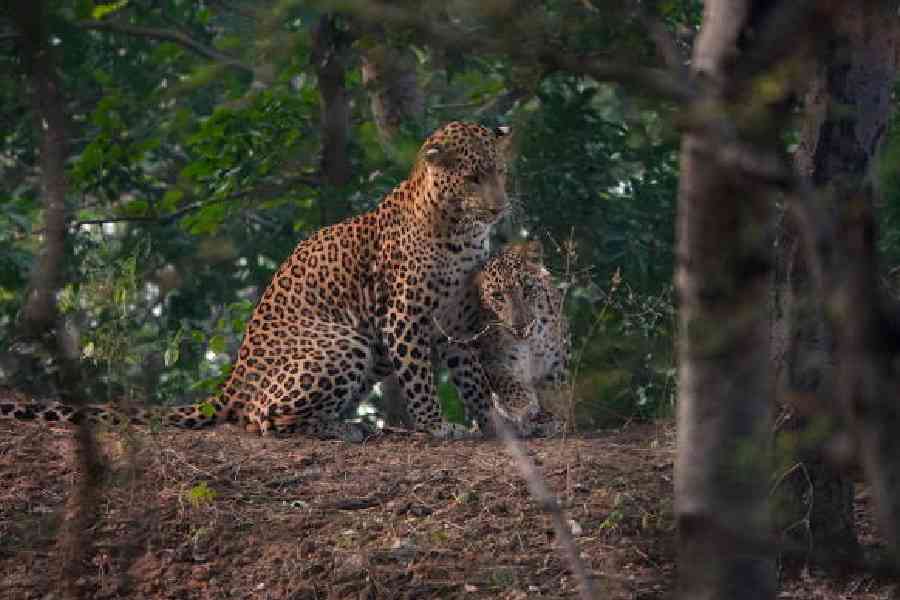It would not be an overstatement if I said the past couple of months had been difficult for me. I could sense I was steadily losing my trademark joie de vivre. Thankfully, I was saved by the bell, literally. I received a phone call from an acquaintance and friend, Hemant, who is a self-employed forest guide at Jhalana, inviting me for a getaway to the wild. There was no time to lose. I packed my bags and gear and left, more eager than ever to reconnect with the great outdoors. I often say that simply being in the forest is like filling my lungs with oxygen, and when I feel worn and weary, an escape to a reserve forest or natural park is what makes me whole once more.
There’s more to Rajasthan than forts, textiles, and silverware. Animal lovers and birders agree unanimously that Rajasthan is a haven for them with a rich treasure trove of fauna of more than 500 species of birds alone. For me, Jhalana was an eye-opener of sorts, situated on the fringes of Jaipur and home to 28-plus full-grown leopards and their cubs.
The Jhalana Leopard Reserve is a prominent wildlife sanctuary that is located in the eastern part of Jaipur. Spanning a little over 23sq km, it lies nestled in the Aravalli hills, providing a natural habitat for a thriving leopard population. Established as a protected area in 2016, it is one of India’s first leopard reserves, showcasing an interesting and successful model of urban wildlife conservation.
The Jhalana Leopard Reserve is best known for its high leopard density, making it one of the easiest places to spot these elusive big cats. In addition to leopards, Jhalana is also home to a variety of wildlife that includes striped hyenas, several species of deer including sambar, desert foxes, jackals, nilgai (blue bulls), peacocks, and several bird species.
Jhalana is wild and serene, comprising undulating rocky hills, and lush deciduous forests interspersed with scrublands. It’s altogether a wildlife lover’s delight. Jhalana is incredibly close to Jaipur city and this makes it a popular destination for wildlife enthusiasts and photographers like me.
I have been visiting this forest since 2018 and each time I am impressed at the amount of conservation work that the forest department of Rajasthan undertakes.
On the leopard trail
Probably the shortest of wildlife trips that I have undertaken in the recent past was my two-day escape to Jhalana in Jaipur, a city that I have visited umpteen times, enroute to Ranthambore. This recent visit was timed perfectly with a leopard couple’s lovemaking in their territory.
Here’s the thing about leopards which fall in the category of big cats. Should you imagine them to be aggressive as many other animal pairs in heat tend to be, you are wide off the mark. Over the two days and three safaris that we undertook, wherein we followed and watched them from afar, I found them to be rather shy and reserved animals. They roamed about snuggling close to one another, eating, playing, and resting between bouts of mating, not the least bit ferocious.
Over the two days, we also got news of a big kill that had occurred. A sambar had been preyed upon near one of the reserve forest entry gates. As we were located near the leopard couple, we missed the sighting of this leopard attack in the wild, which took place at a distant entry point, though there were some tourists who did manage to witness it, I was told.
Animals co-exist
Jhalana is also home to some rare and spectacular bird species and this makes it a birder’s hotspot too. A case study of unique man-animal co-existence, Jhalana is less than 15 minutes away from Jaipur airport. There, where the leopards roam, is a wild territory. Yet, look out towards the horizon and you might spy a chimney or two belonging to the small and medium-scale industrial units in the vicinity. You may also make out some kothis as the largish, stand-alone residences there are locally known as.
Upon making enquiries and doing a bit of research, I discovered that there has not been a single case of man-animal conflict. I reasoned this could be because of a sizeable prey base available for the big cats. It could also be due to the fact that there are no villages and habitation within the area of the reserve forest, so to say, unlike those in other national parks and forests. Doubtless, this makes for an interesting case of modern-day man-animal co-existence and a wonderful example of ecological progression in Jhalana.
Back again in Calcutta, I realised two days were not enough to uncover the delights of Jhalana. I am already looking forward to being back there again for yet another adventure.
Shiladitya Chaudhury is a communication consultant and a restaurateur with brands like Oudh 1590 and Chapter 2. His passion for wildlife photography takes him to the remotest of jungles.
Camera used: Sony A9 Mark 3 with 200-600 lens Sony RX10 Mark 4










